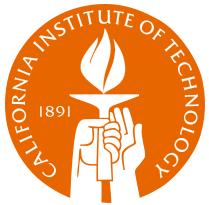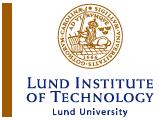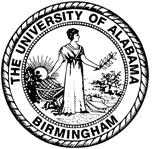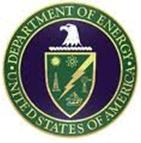|
| |
|
Proof supporting
"Hydrogen On Demand" |
| |
|
|
Research: |
|
|
 1975 1975
Research in 1975 examined hydrogen enhanced gasoline in lean combustion.
John Houseman and D.J Cerini of the Jet Propulsion Laboratory produced a
report for the Society of Automotive Engineers titled "On-Board Hydrogen
Generator for a Partial Hydrogen Injection Internal Combustion Engine",
and F.W. Hoehn and M.W. Dowy, also of the Jet Propulsion Lab, prepared a
report for the 9th Intersociety Energy Conversion Engineering
Conference, titled "Feasibility Demonstration of a Road Vehicle Fueled
with Hydrogen Enriched Gasoline.
 Download
Hydrogen Injection Report
Download
Hydrogen Injection Report |
|
|
|
|
 1977 1977
NASA conducted research using hydrogen as a supplemental fuel to
gasoline on a 1969 production engine. Their research specifically
demonstrated that the higher flame speed of hydrogen was responsible for
being able to extend the efficient lean operating range of a gasoline
engine. They successfully used a methanol steam reformer for in situ
production of carbon monoxide and hydrogen.
Lean-mixture-ratio combustion in internal-combustion engines has the
potential of producing low emissions and higher thermal efficiency for
several reasons. First, excess oxygen in the charge further oxidizes
unburned hydrocarbons and carbon monoxide. Second, excess oxygen lowers
the peak combustion temperatures, which inhibits the formation of oxides
of nitrogen. Third, the lower combustion temperatures increase the
mixture specific heat ratio by decreasing the net dissociation losses.
Fourth, as the specific heat ratio increases, the cycle thermal
efficiency also increases, which gives the potential for better fuel
economy.
 Download NASA
HHO Report
Download NASA
HHO Report |
|
|
|
|
 2002 2002
Research done in 2002 shows that the "addition of hydrogen to natural
gas increases the burn rate and extends the lean burn-limit". Also
concluded was that "hydrogen addition lowers HC emissions", and with
properly "retarded ignition timing" also reduces NOx emissions.
Further research in 2002 achieved results showing "a reduction of NOx
and CO2 emissions", by modeling an on-board hydrogen reformer and
"varying the efficiency". The research was specifically a "numerical
investigation" done to "foresee performances, exhaust emissions, and
fuel consumption of a small, multi valve, spark ignition engine fueled
by hydrogen enriched gasoline".
 Download
HHO Test Report
Download
HHO Test Report
|
|
|
|
|
 2003 2003
In 2003 Tsolakis at Alabama University of Birmingham showed that
"partial replacement of the hydrocarbon fuel by hydrogen combined with
EGR resulted in simultaneous reductions of smoke and nitrogen oxides
emissions (NOx) without significant changes to engine efficiency".
Similar results have been presented by a team of scientists from
Zhejiang University, China, which found that "a little amount of
hydrogen supplemented to the gasoline-air mixture can extend the
flammability of the mixture... improving the economy and emissions of
engines".
|
|
|
|
|
2004
Test results in 2004 show "that the H2 rich reformate gas was an
excellent NOx reductant, and can out perform raw Diesel fuel as a
reductant in a wide range of operating conditions". This is referring to
Diesel fuel being used in excess, as a reductant, to cool the combustion
reaction, which indeed has a mitigating effect on NOx production.
In 2004 research was conducted concluding that an "SI engine system
fueled by gasoline and hydrogen rich reformate gas has been
demonstrated" to achieve a "dramatic reduction of pollution emissions".
This was achieved by "extending EGR operation" in addition to consuming
"gasoline and hydrogen rich reformate". Emissions results show that
"HC-emissions as well as NOx-emissions could be reduced to near zero".
Overall a 3.5% reduction in CO2 emissions was achieved during the "FTP
test cycle" The research also concluded that the exhaust after treatment
system can be simplified, "resulting in cost reduction for the
catalysts".
|
|
|
|
 2006 2006
Application of Hydrogen Assisted Lean Operation to Natural Gas-Fueled
Reciprocating Engines (HALO)
Two key challenges facing Natural Gas Engines used for cogeneration
purposes are spark plug
life and high NOx emissions. Using Hydrogen Assisted Lean Operation
(HALO), these two
keys issues are simultaneously addressed. HALO operation, as
demonstrated in this project,
allows stable engine operation to be achieved at ultra-lean (relative
air/fuel ratios of 2) conditions, which virtually eliminates NOx
production. NOx values of 10 ppm (0.07 g/bhp-hr NO) for 8% (LHV H2/LHV
CH4) supplementation at an exhaust O2 level of 10% were demonstrated,
which is a 98% NOx emissions reduction compared to the leanest
unsupplemented operating condition. Spark ignition energy reduction
(which will increase ignition system life) was carried out at an oxygen
level of 9 %, leading to a NOx emission level of 28 ppm (0.13 g/bhp-hr
NO). The spark ignition energy reduction testing found that spark energy
could be reduced 22% (from 151 mJ supplied to the coil) with 13% (LHV
H2/LHV CH4) hydrogen supplementation, and even further reduced 27% with
17% hydrogen supplementation, with no reportable effect on NOx emissions
for these conditions and with stable engine torque output. Another
important result is that the combustion duration was shown to be only a
function of hydrogen supplementation, not a function of ignition energy
(until the ignitability
limit was reached). The next logical step leading from these promising
results is to see how much the spark energy reduction translates into
increase in spark plug life, which may be accomplished by durability
testing.
 Download the HALO report
Download the HALO report |
|
|
|
 2007 2007Department
of Transportation Report
 Guidelines for use of hydrogen fuel in
Commercial Vehicles
Guidelines for use of hydrogen fuel in
Commercial Vehicles |
|
|
|
 2008 2008
Sustainable Energy Centre, School of Advanced Manufacturing and
Mechanical Engineering, University of South Australia, Mawson Lakes, SA
5095, Australia
Using hydrogen as an additive to enhance
the conventional diesel engine performance has been
investigated by several researchers and the outcomes are very promising.
However, the problems associated with the production and storage of pure
hydrogen currently limits the application of pure hydrogen in diesel
engine operation. On-board hydrogen–oxygen generator, which produces
H2/O2 mixture through electrolysis of water, has significant potential to
overcome these problems. This paper focuses on evaluating the
performance enhancement of a conventional diesel engine through the
addition of H2/O2 mixture, generated through water electrolysis. The
experimental works were carried out under constant speed with varying
load and amount of H2/O2 mixture. Results show that by using 4.84%,
6.06%, and 6.12% total diesel equivalent of H2/O2 mixture the brake
thermal efficiency increased from 32.0% to 34.6%, 32.9% to 35.8% and
34.7% to 36.3% at 19 kW, 22 kW and 28 kW, respectively. These resulted
in 15.07%, 15.16% and 14.96% fuel savings. The emissions of HC, CO2 and
CO decreased, whereas the NOx emission increased.
 Effect of H2/O2 addition in increasing the
thermal efficiency of a diesel engine
Effect of H2/O2 addition in increasing the
thermal efficiency of a diesel engine
|
|
|
|

HYDROGEN GENERATION FROM ELECTROLYSIS
- REVISED FINAL TECHNICAL REPORT
DOE GO13028-0001 DESCRIPTION/ABSTRACT This report is a summary of the
work performed by Teledyne Energy Systems to understand high pressure
electrolysis mechanisms, investigate and address safety concerns related
to high pressure electrolysis, develop methods to test components and
systems of a high pressure electrolyzer, and produce design
specifications for a low cost high pressure electrolysis system using
lessons learned throughout the project. Included in this report are data
on separator materials, electrode materials, structural cell design, and
dissolved gas tests. Also included are the results of trade studies for
active area, component design analysis, high pressure hydrogen/oxygen
reactions, and control systems design. Several key pieces of a high
pressure electrolysis system were investigated in this project and the
results will be useful in further attempts at high pressure and/or low
cost hydrogen generator projects. An important portion of the testing
and research performed in this study are the safety issues that are
present in a high pressure electrolyzer system and that they can not
easily be simplified to a level where units can be manufactured at the
cost goals specified, or operated by other than trained personnel in a
well safeguarded environment. The two key objectives of the program were
to develop a system to supply hydrogen at a rate of at least 10,000 scf/day
at a pressure of 5000psi, and to meet cost goals of $600/ kW in
production quantities of 10,000/year. On these two points TESI was not
successful. The project was halted due to concerns over safety of high
pressure gas electrolysis and the associated costs of a system which
reduced the safety concerns.
 Download the Report.
Download the Report. |
|
|
|
 2010, May 2010, May
 Effects of hydroxy (HHO) gas addition on performance and exhaust
emissions in compression ignition engines (diesel).
Effects of hydroxy (HHO) gas addition on performance and exhaust
emissions in compression ignition engines (diesel).
In this study, hydroxy gas was produced by the electrolysis process
of different electrolytes with various electrode designs in a leak proof
plexiglass reactor (hydrogen generator). Hydroxy gas was used as a
supplementary fuel in a four cylinder, four stroke, compression ignition
engine without any modifications and without need for storage tanks. |
|
|
|
|

Government
To date, Hydrogen fuel enhancement products have not been specifically
addressed by the United States Environmental Protection Agency. No
research devices or commercial products have reports available as per
the "Motor Vehicle Aftermarket Retrofit Device Evaluation Program." Ask
Your self : "Why do they not use hydrogen on demand technology?
 Search for Government Documents
Search for Government Documents |
|
| |
|
| |
|
Page Last Edited -
04/03/2022
|